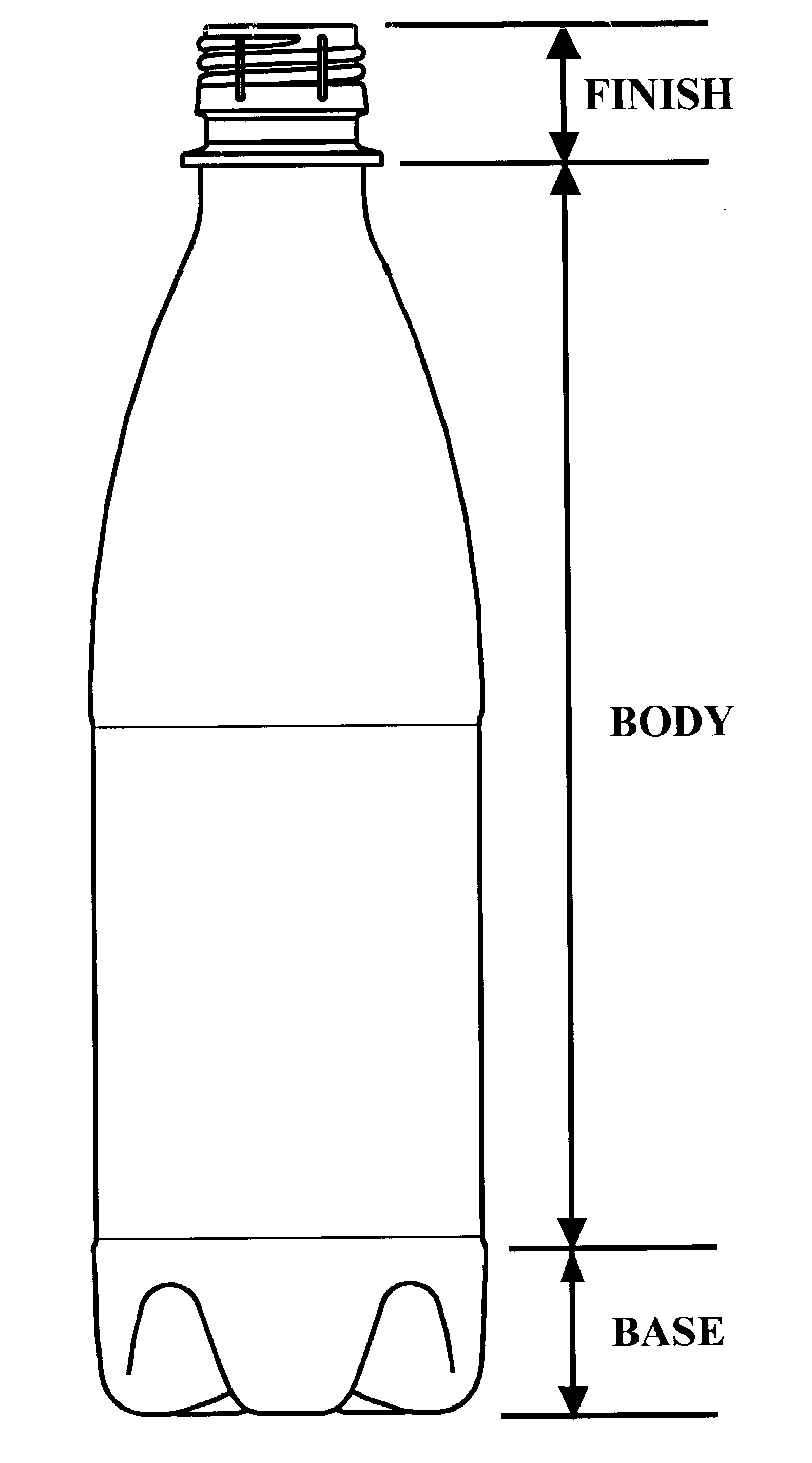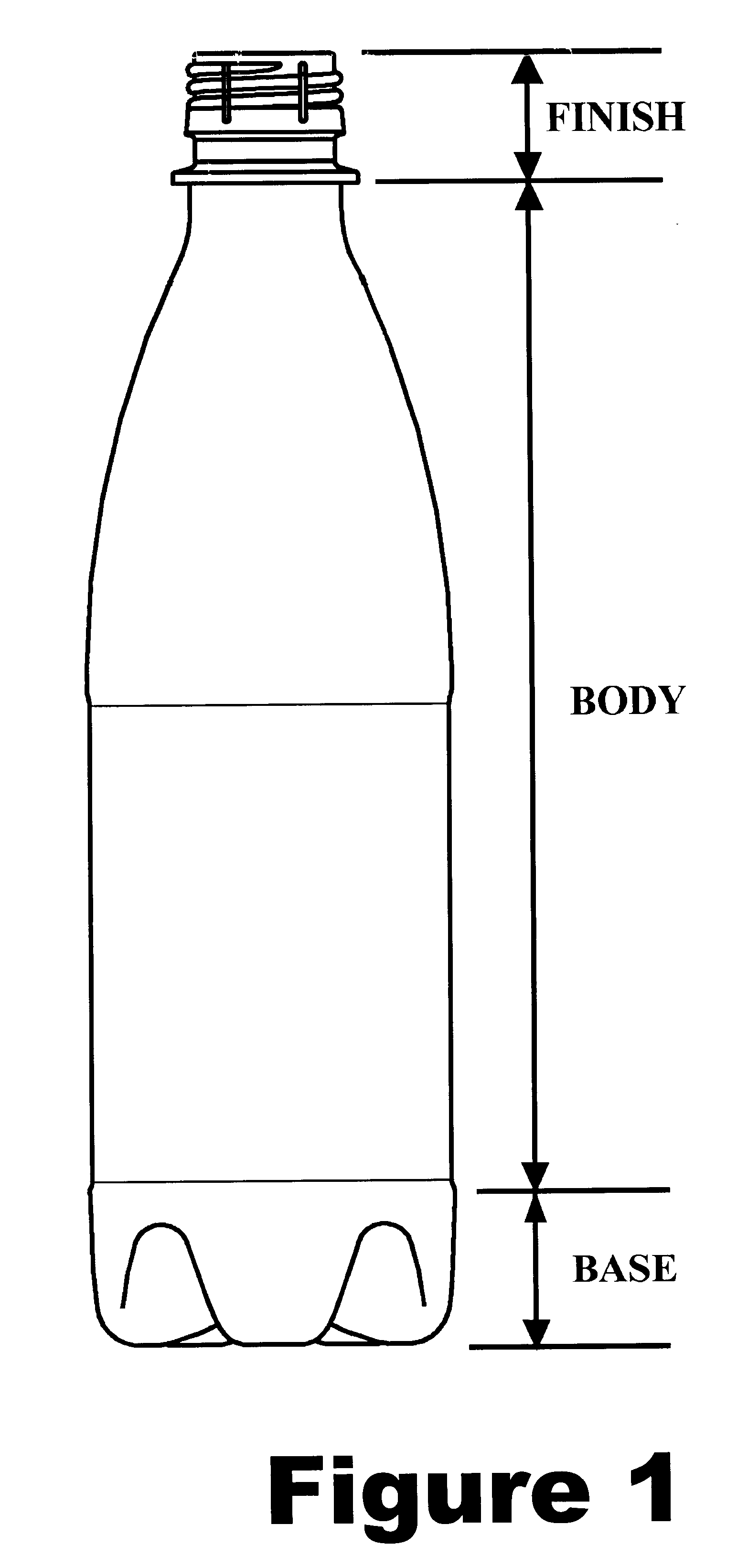Containers having improved barrier and mechanical properties
a technology of applied in the field of containers having improved barrier and mechanical properties, can solve problems such as unbalanced crystal lattice, and achieve the effect of improving barrier and/or mechanical properties
- Summary
- Abstract
- Description
- Claims
- Application Information
AI Technical Summary
Benefits of technology
Problems solved by technology
Method used
Image
Examples
example 1
An injection stretch-blow molded, multilayer PET bottle was made, having improved oxygen barrier from an MXD6 nylon nanocomposite barrier layer. The transparent bottle was blown from a preform that was produced by co-injection molding of PET resin and MXD6 nylon nanocomposite resin. The polymer resins used in the preform were KoSa #1101 PET and Mitsubishi Gas Chemical MXD6 nylon grade #6007. The nanoclay material that was incorporated into the nylon was treated montmorillonite, grade #30B Cloisite, from Southern Clay Products, Inc. The bottle filling-volume was 0.5 liter, and the total wall thickness in the body was about 0.33 mm. The thickness of the nylon nanocomposite barrier layer in the body was 0.025 mil, and this layer was sandwiched between the inner and outer PET layers. The table below indicates the reduction in oxygen transmission rate into the bottle owing to the presence of nanocomposite MXD6 rather than neat MXD6 in the barrier layer. The whole-bottle oxygen transmissi...
example 2
An injection stretch-blow molded PET jar, with a finish diameter of approximately 70 mm, is made with a main body of monolayer PET and a finish of either monolayer PET-nanocomposite, or multilayer PET and PET-nanocomposite. The PET-nanocomposite in the finish improves the thermal stability (resistance to warping) of the finish and allows the jar to be hot-filled to temperatures of 200° C. The jar is blown from a preform produced by coinjection molding of PET and PET-nanocomposite. The PET nanocomposite contains from 1% to 10% nanoclay by weight, and is not necessarily transparent. Placement of PET-nanocomposite in the finish of the coinjected preform is accomplished by adjusting the coinjection process parameters, such that the material injected into the finish portion of the mold is substantially PET-nanocomposite.
example 3
An injection stretch-blow molded, three-layer PET bottle is made with a layer of PET-nanocomposite sandwiched between layers of neat (unfilled) PET. The PET-nanocomposite layer, with a thickness of 10% to 40% of the total wall thickness, substantially increases the hot fill temperature of the bottle, because of the improved thermal stability of the nanocomposite layer compared with neat PET. The PET nanocomposite contains from 1% to 10% nanoclay by weight, and is not necessarily fully transparent. The bottle is blown from a preform that was produced by co-injection molding of neat PET resin and PET-nanocomposite resin.
PUM
| Property | Measurement | Unit |
|---|---|---|
| shear melt viscosity | aaaaa | aaaaa |
| aspect ratios | aaaaa | aaaaa |
| diameter | aaaaa | aaaaa |
Abstract
Description
Claims
Application Information
 Login to View More
Login to View More - R&D
- Intellectual Property
- Life Sciences
- Materials
- Tech Scout
- Unparalleled Data Quality
- Higher Quality Content
- 60% Fewer Hallucinations
Browse by: Latest US Patents, China's latest patents, Technical Efficacy Thesaurus, Application Domain, Technology Topic, Popular Technical Reports.
© 2025 PatSnap. All rights reserved.Legal|Privacy policy|Modern Slavery Act Transparency Statement|Sitemap|About US| Contact US: help@patsnap.com


